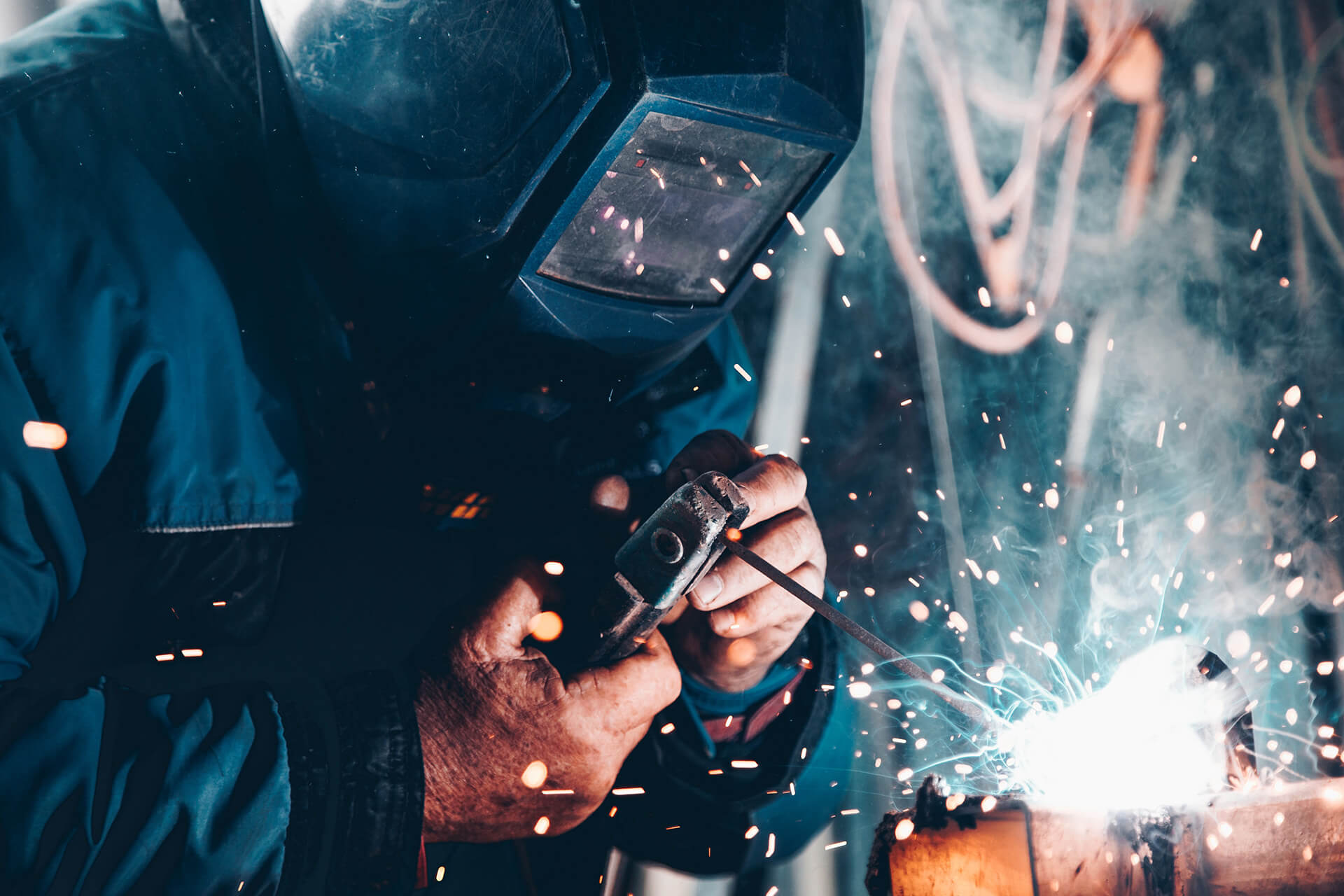Welding work is usually only one of a number of processes required to fabricate or manufacture something. Several of these processes can generate significant noise hazards.
Read More: Noise Hazards at the Workplace >
Table of Contents
What affects Your hearing in welding work?
Sheet metal work usually requires guillotining and hammering or pressing to form components. Thicker metal is often ground to prepare an edge for welding.
During welding, slag can be removed with chipping hammers or grinders. Air-arc gouging or pneumatic burr grinding may be used to remove incorrectly deposited weld metal. All of these processes create noise at a potentially damaging level.
The Control of Noise at Work Regulations defines a lower exposure action value as a daily or weekly personal noise exposure:
- 80 dB – an upper exposure action value as a daily or weekly personal noise exposure.
- 85 dB – an exposure limit value of a daily or weekly personal noise exposure.
- 140dB – Absolute peak noise level.
It should be remembered that an increase of 3dB is equivalent to doubling the noise. No employee shall be exposed to noise levels above the peak level or consistently above the limit of 87dB, though these levels take into account the effect of wearing hearing protection.
Guillotining and hammering can easily achieve 95 to 100dB, grinding may reach 105dB and air carbon arc gouging creates noise levels in excess of 110dB. Some welding processes are noisy in their own right.
With a noise level above the lower action limit, hearing protection should be available on request to employees. In conditions above the upper level of 85dB, the employer must make hearing protection available and ensure that it is worn.
The employee is obliged to make use of such PPE (Personal Protective Equipment) provided.
Read More: Hearing Loss among US Steelworkers >
Using Personal Protective Equipment (PPE) for Head and Ear Protection in welding work
• When working out of position, such as overhead, wear approved earplugs or muffs. They prevent sparks, spatter, and hot metal from entering your ears and causing burns.
• If loud noise is present, wear approved earplugs or muffs to protect your hearing and prevent hearing loss.
To comply with the Regulations, an employer has to conduct a risk assessment of the noise in the working environment and do all that is possible to reduce the level so far as is reasonably practicable.
Where the upper action level is exceeded, the employer must designate the area as a hearing protection zone using appropriate signage and ensure that employees and others entering it wear hearing protection.
Furthermore, health surveillance records that include hearing tests must be kept and be made available to employees on request.
High-risk areas of welding connected to Hearing Loss
There are two high-risk areas of welding connected to hearing loss.
1. Drop Weld Ear Injury
The first is a Drop Weld ear injury, which can occur if any of the hot metal falls into the ear canal and burns.
Often, the eardrum has a hole burnt into it. Instances have been reported when the metal then cools in the middle ear and hardens around the ossicles. In such cases, surgery to remove the metal and reconstruct the middle ear is needed.
More and more of the masks used by professional welders are designed to cover the ears as well as the face. But those who weld as a hobby also need to cover their ears.
Drop weld injuries to the tympanic membrane and middle ear caused by hot sparks or molten slag are a rare but significant injury. Steelworkers and welders who are regularly exposed to flying sparks and molten metal slag are predisposed.
Read More: Middle Ear Infection – Acute Otitis Media – Symptoms, Causes, Prevention >
This type of transtympanic thermal injury occurs when the slag literally drops into the external auditory canal and burns through the tympanic membrane. A spectrum of severity of injury occurs which includes chronic tympanic membrane perforation, chronic otorrhoea, facial nerve injury, and deafness.
Chronic tympanic membrane perforation is the most common sequelae and is perhaps one of the most challenging of all perforations to repair the combination of direct thermal injury and foreign body reaction results in continuing or recurrent suppuration.
2. Exposure to gases
The other high risk that welders face is exposure to gases. Over a long period of time, these gases can affect the welder in a variety of ways. These include causing hearing loss and also Parkinson’s disease and symptoms that are similar to Parkinson’s, which are linked to Manganese exposure.
Manganese is one of the gases released in the welding fume. When performing a task, a welder can inhale the fumes, which may then enter the lungs, bloodstream, brain nerve cells, spinal cord, and other organs, resulting in both short and long-term effects.
Workers Compensation Lawyers in Wisconsin
If you have suffered hearing injuries caused by a welding accident, you may qualify for benefits under the Wisconsin workers’ compensation system.
If you face any problem in getting the benefits you deserve, contact the Johnson Law Office free case evaluation.
Read More: All About Workers’ Compensation >
Sources:
- https://pubmed.ncbi.nlm.nih.gov/20597421/
- https://www.hsimagazine.com/article/protect-your-welders-490/
Contact Us
If you, or anyone you know, worked in noise and suffers from hearing loss, please do not hesitate to contact us.
Contact Us


